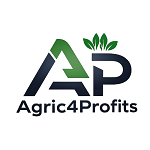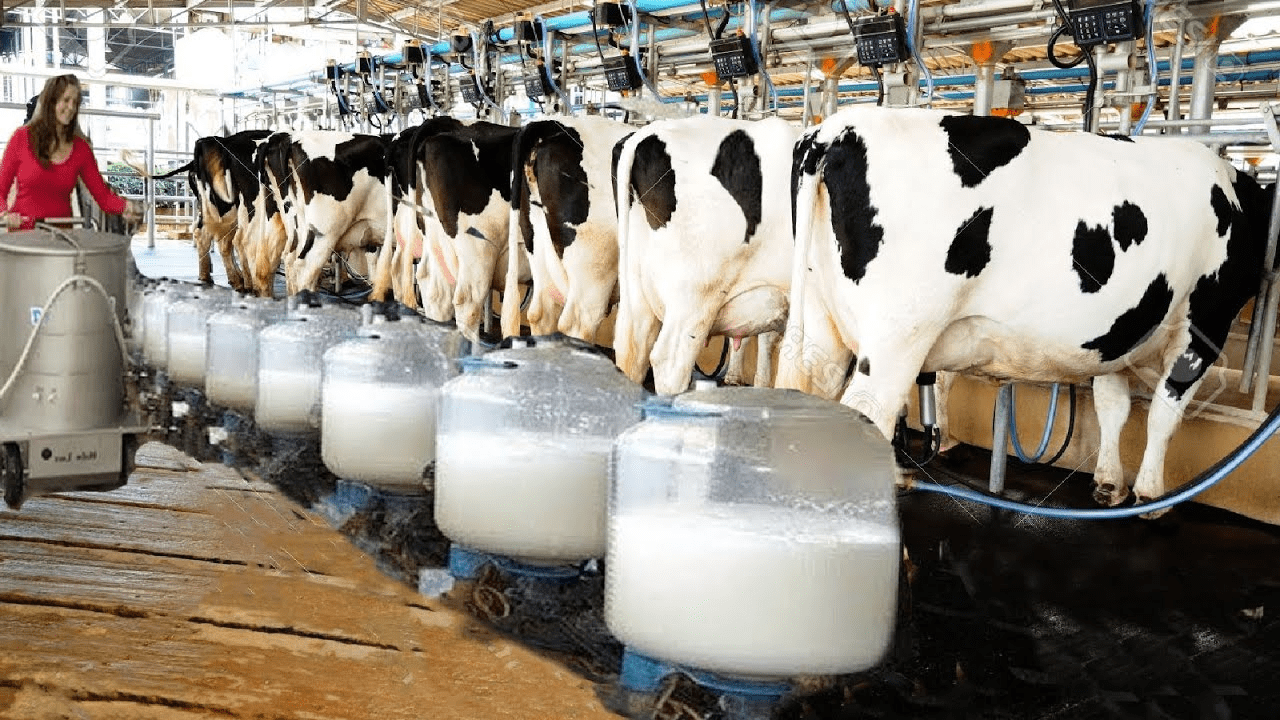In this article, we will discuss the milking process in a dairy farm. The milking process is very important because bad milking methods lead to injury to the udder, reduce milk yield, and may lead to diseases such as mastitis.
A dairy farm is a place where cows are raised specifically for milk production. The farm focuses on breeding, feeding, and caring for cows to produce milk, which is then collected, processed, and sold as dairy products like milk, cheese, and yogurt.
Milk is an important nutrient for humans as milk contains proteins, calcium, potassium, phosphorus, vitamin A, riboflavin, and thiamine which are all beneficial to the human body.
Management of Milking Cows
Dairy cows are creatures of habit. They respond well to routine procedures. Milking is usually carried out twice a day – early morning and late afternoon 5.30 am and 3.30 pm. More than twice a day milking can be done. This has been shown to increase milk production but the labor involved is high.
Between the two milking periods animals are either grazed, fed concentrate in pens, or both. In the tropics, it is advisable to graze animals in the mornings and evenings because of high ambient temperatures during the day.
Grazing should not be done too early in the morning, however, to prevent bloat which is caused by cattle consuming much grasses or grasses covered with dew in the early mornings. Concentrate feeding of dairy cows is done in relation to milk production.
Milking Methods in a Diary Farm
There are two milking methods in a diary farm and they basically include: hand milking and machine milking.
1. Hand milking method
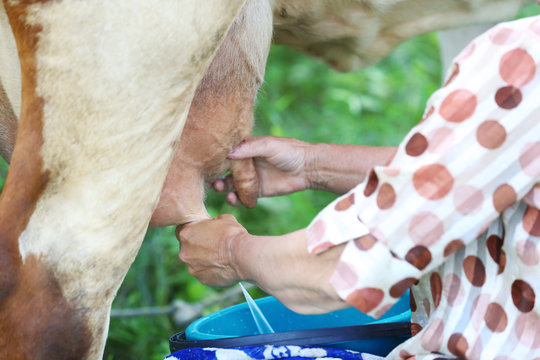
This is the method in use by our traditional herdsmen. Hand milking is laborious, time-consuming, inefficient, and leads to injury to the maker, and a high incidence of milk contamination which may be by the cow or herdsmen or by dust, dirt, and insects.
It is however relatively cheap and can also be practiced with certain breeds of cattle e.g. Sahiwal which has a large teat that cannot enter the milking cup.
2. Machine milking method
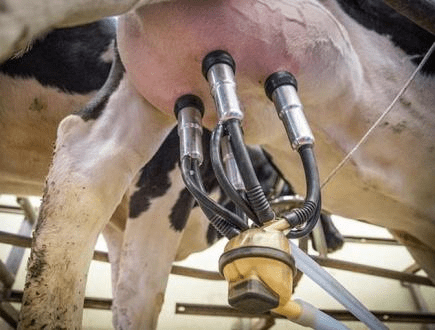
This method is more efficient since large numbers of cows can be milked within a short time. Machine milking usually takes a short time. The milk obtained from machine milking is clean and free of contaminants.
It is however expensive to acquire the machines instead, of operating and maintaining them. The operation and maintenance also need experts.
Milking Procedure
The milking process normally occurs in a step-by-step orderly manner. The process is as follows:
(a) Both the milker’s hands and equipment should be cleaned and sanitized to prevent contamination by micro-organisms.
(b) The udder and teat of the cow should then be washed with warm water and a sanitizing solution and massage. It is advisable to use individual napkins or disposable paper to clean the udder after washing. Washing of the udder stimulates milk ejection and prevents contamination.
(c) Where hand milking is done it is rubbed with Vaseline in order to soften the teat.
(d) Whether by hand or machine, the teats are pressed for the first few drops of milk that come into the cup to check whether it is pure or not. If there appears to be any cloth, pus, or blood stain then the cow is having mastitis. The cow should therefore be milked last and the milk thrown away.
(e) For uncontaminated milk the cow is then hand milked or the milking machine is attached gently to the teat and the animal is milked.
(f) After milking the machine is removed gently from the teat as soon as the milk flow stops and the machine is then detached.
(g) The teat is then dipped in an antiseptic solution to prevent contamination.
Read Also Innovative Methods of Milking Animals
Some Bad Traits in Milking Cows
Bat traits exhibited by cows during milking are numerous. However, some are highlighted in the following sections.
1. Kicking: Some cows can kick when being milked. This may occur as a result of the following: rough handling by the milker, over milking, injury, sometimes such cows will no longer remain quiet for milking and will also not let down their milk. In order to prevent this cows should be: given concentrate during milking, and the calf should be allowed near the cow.
2. Milk Leakage: Sometimes the Sphinter’s muscles get weak, the teat opening will therefore not close tightly enough. This leads to milk leakage. Such animals should be culled.
3. Hard Milking: Sometimes the teat could be too hard and milking becomes difficult, particularly with hand milking – such cows should be sold.
Milk Production Pattern
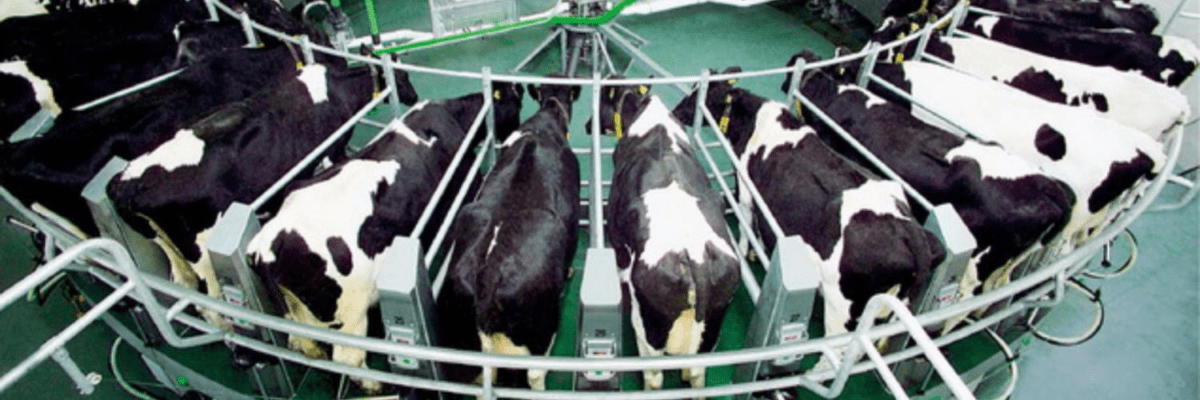
Milk production of well-fed and managed dairy cows follows a definite pattern. There is first an increase which gets to a peak, it stabilizes at this point for a period of time and then declines until the animal dries up. For improperly fed or managed animals the milk production does not follow any particular pattern.
The average peak period of lactation is about 30 days in tropical animals. This is because of poor feeding and watering, high temp, pests, and disease attacks.
Read Also: How to Make a Balanced Feed Formulation for Cattle, Sheep and Goats
FAT-corrected Milk Yield or 305 Days 4% Fat Milk Yield (FCM)
The lactation period varies from one animal to another. The composition of milk also varies. Milk contains the following.
| Water | Temperature | Tropical |
| Dry Matter | 87.2 | 86.1 |
| Fat | 12.8 | 13.91 |
| Solid-Not-Fat | 3.4 | 5-6 |
| Protein | 9.1 | 9.3 |
| Lactose | 3.5 | 4.9 |
| Minerals | 4.9 | 3.7 |
| 0.7 | 0.7 |
The different breeds of dairy cows make it necessary to standardize the milk yield of different breeds of animals. This is done for the following reasons:
1. To determine the milking ability of a cow.
2. To compare the abilities of different cows.
3. Standardize the lactation period.
4. Compare the performance of difference of different slaughters of a particular male.
The 305-day 49% fat milk yield (fat corrected yield) is the amount of milk containing 4% fat produced by the cow that is milked twice a day during a lactation period of 305 days. The formula is: FCM = 0.4 -15F where;
| Y | = | Actual milk yield of the cow |
| F | = | Amount of fat in milk |
In conclusion, milk is an important food for humans particularly infants and invalid. It contains all the amino acids required for optimum growth and development. The process of obtaining the product from the cow is important and should be carried out under hygienic conditions.
